
Admin News
It was great to see a good number of parents joining our CIS Parent Coffee on Tuesday morning, where we discussed some big ideas about Social Emotional Learning (SEL) that we could apply to ourselves, and our students. A definition of SEL was presented as follows:

Our next task was to consider critical practice #2 (from the CASEL “SEL road map”): “Design opportunities where adults can connect, heal, and build their capacity to support students”, after which we discussed the essential question: How can we as parents support the social emotional learning (SEL) needs of our students? I will share some of the ideas once we have completed distilling them, and look forward to working on them with many of you!
“Evening chat with the Superintendent”
Please make a note in your calendar to attend an “Evening Chat with the Superintendent” at 8-9pm next Tuesday, January 26 (virtual). The objective of this event is to provide an additional opportunity for parents (and students if they want!) to chat about school issues, and particularly for those who are unable to attend school meetings during the day.
Please email with any areas you might be specifically interested in including in the chat so we can fit them into the agenda of items to cover for this meeting. *Links for this meeting will be sent via registered email prior to the event.
Have a wonderful weekend.
Regards,
Dr. Gwyn Underwood,
Superintendent
Elementary News
by Mr. Glenn Davies, Elementary School Principal
A Changing Future
One of my favorite educational quotes comes from John Dewey, an American educational theorist who had a significant impact on educational reform in the first half of the 20th Century, and whose theories underpin many of our modern teaching approaches. In this quote, John Dewey said; “If we teach today’s students as we taught yesterday’s, we rob them of tomorrow.”
The world we live in is changing at a rapid pace, and many new procedures, innovations, and technologies are difficult for us to fully understand. Yet this is the world that our children are learning to master and navigate. This is vastly different from the world our parents and grandparents lived in, and our children’s future will be different from what ours has been. This is why at CIS, we offer an IB Education. An IB education is the type of education that prepares your children to navigate this changing future. The Primary Years Programme (PYP) provides the structure, support, and ongoing professional development that enables schools like CIS to;
- Develop inquiring, knowledgeable, and caring young people who help to create a better and more peaceful world through intercultural understanding and respect
- Develop challenging programmes of international education and rigorous assessment
- Develop active, compassionate, and lifelong learners who understand that other people, with their differences, can also be right
- Developing internationally minded people who recognize their common humanity and shared guardianship of the planet
- Embed within students, powerful sets of skills and attributes that enable them to construct, discover and apply knowledge in multiple contexts.
The Approaches to Learning
You will have seen on the CIS report cards a section that refers to the Approaches to Learning Skills and Attributes (ATLs). The ATLs are a key element in an IB PYP education. There are five sections to ATL’s;
- Thinking Skills: Students develop the competence to analyze and evaluate issues and ideas. They form decisions, generate novel ideas, and consider new perspectives. Students use their skills and knowledge in multiple contexts and take time to reflect upon the process of their learning.
- Research Skills: Students formulate and plan their learning. They gather data and synthesize, interpret, evaluate and communicate their findings. Students interact with the media to use and create ideas and information.
- Communication Skills: Students listen to others, interpret what they hear, and speak with confidence. Students use their language to gather and communicate information and their new learning.
- Social Skills: Students develop positive interpersonal relationships and learn to collaborate. They gain a high level of social and emotional intelligence.
- Self-Management Skills: Students learn to manage their time and their tasks effectively. They also learn strategies that enable them to manage their state of mind.
When CIS teachers design learning engagements, they always consider ways to embed the development and repetitive practice of the ATLs within every learning experience. In this way, the ATL’s are taught intentionally and within authentic contexts across all subject areas. When I join collaborative planning meetings with our teachers, I hear engaging conversations between homeroom teachers, specialist teachers, EAL teachers, and educational assistants as they think deeply about the application of the ATLs.
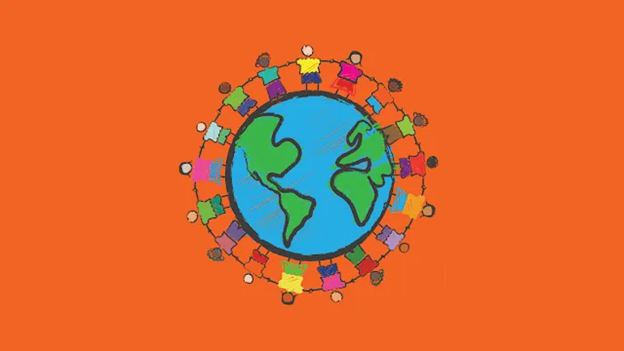
Life-Long Learners
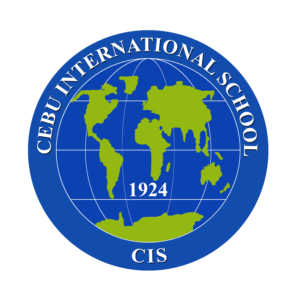 At CIS we are driven to create students who love learning, who are self-directed in their learning, who are curious about the world around them. We aim to develop students who can set goals and identify their own success criteria to determine when their goals have been achieved. By embedding these attributes into our student learning experiences, we believe we are developing Life-Long Learners. CIS is not a school where we teach today’s students in the same way we taught yesterday’s. Rather, we aim to prepare students with a wide range of skills and competencies that will prepare them to successfully navigate and master a rapidly changing world.
At CIS we are driven to create students who love learning, who are self-directed in their learning, who are curious about the world around them. We aim to develop students who can set goals and identify their own success criteria to determine when their goals have been achieved. By embedding these attributes into our student learning experiences, we believe we are developing Life-Long Learners. CIS is not a school where we teach today’s students in the same way we taught yesterday’s. Rather, we aim to prepare students with a wide range of skills and competencies that will prepare them to successfully navigate and master a rapidly changing world.
Grade 4 & 5 Art Class
In Grade 4/5 Art, we’ve been looking at the work of Pacita Abad, William Morris, Andy Warhol, and Jackson Pollock and asking ourselves how these different artists used PATTERN in different ways. We also looked at some Greek Ancient Pottery and Cave paintings and inquired on how PATTERN was present there.

One interesting discussion was about Jackson Pollock’s paintings… Question/Provocation: “Do these Abstract Artworks by Jackson Pollock have PATTERN or not?” We had a discussion with Grade 4, some said these didn’t have pattern…some said it did… As a teacher, I shared my opinion which was that it still has pattern, because although it’s abstract, he still made a deliberate choice about the color, line and brushstrokes. Some students also shared the same point and argued: “Maybe there’s still a pattern in the way he splattered the paint? Maybe he counted like One-two-three-swish, one-two-three-splatter!”, one student shared.
How about you? What do you think? Is there Pattern in Jackson Pollock’s art?
Here are some selected Grade 4 and 5 Pattern Design that show the students’ interpretations of PATTERN, based on our discussions and questions.
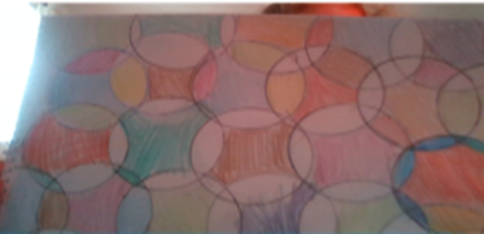
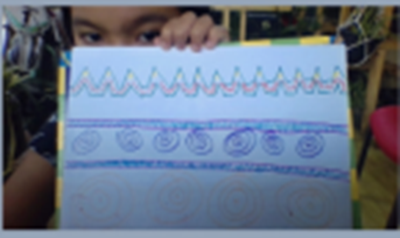
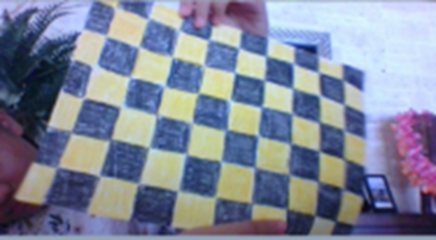
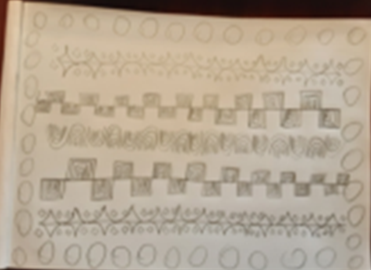
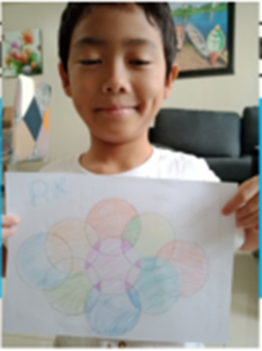
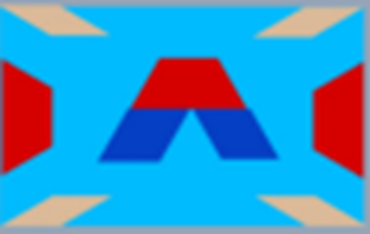
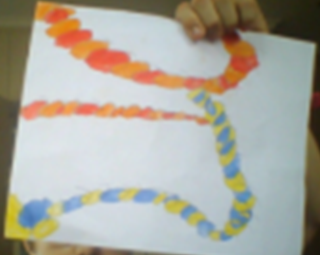
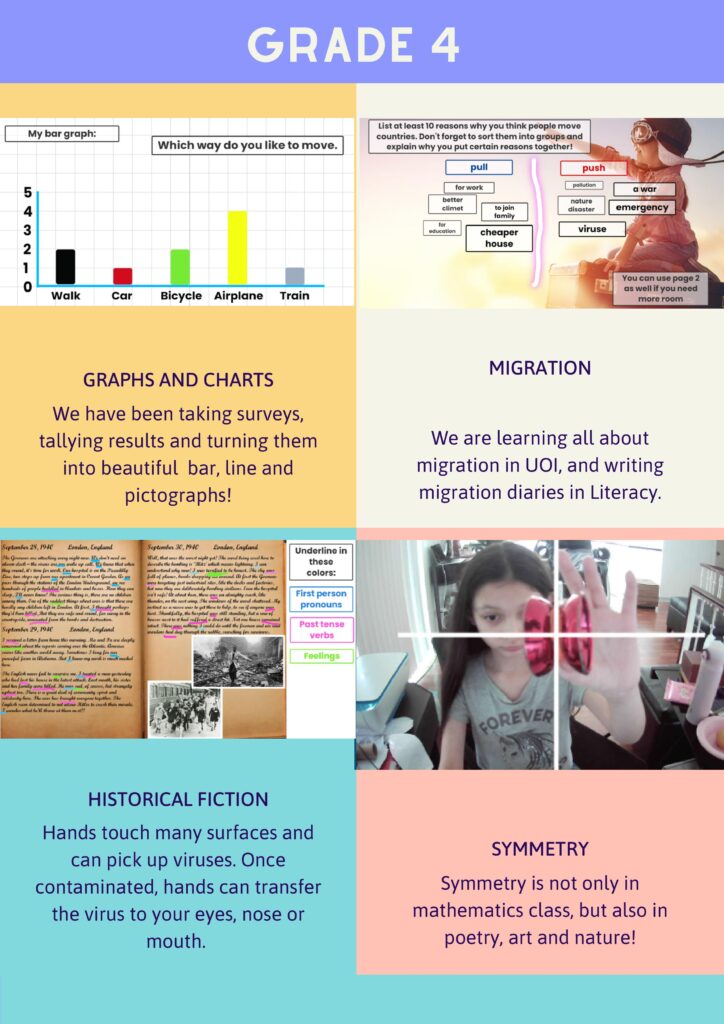
Middle and High School News
by Mr. Dale Wood, Middle and High School Principal
This week MHS focuses on the innovation and creative thinking we find nurtured within the approaches and assessments employed in our various courses in the Science and Design departments. Our teachers have also been challenged to think creatively and innovatively as they have endeavored to provide dynamic and engaging units and lessons for their students in spite of our not being together on campus to conduct experiments in our labs. I trust you will enjoy our journey into the world of Science and Design within the context of remote learning.
Chemistry 12
In the context of remote learning, the use of simulations has been imperative to enhancing the learning experiences of our students. Simulations allow the learners to manipulate experimental variables, observe results, and create models as an alternative to physical availability of laboratory equipment and materials.
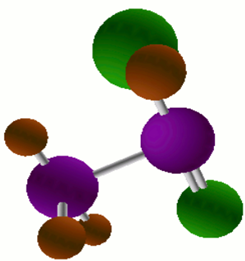
The DP Chemistry 12 students used a simulation named, Go Lab Molecule Builder, to meet the expectations of a prescribed practical in the Organic Chemistry unit. They were tasked to create 3D models of twenty organic molecules belonging to different homologous series. The process using the simulation included the following steps:
- Identifying the homologous series for each compound.
- Associating the homologous series with a functional group.
- Choosing a structure map for the compound.
- Building the molecule from various elements.
This activity challenges the students to arrange the elements correctly and consider the nature of chemical bonding of the compound. When the correct 3D model is attained, the simulation automatically provides a 3D animation of the compound structure as well as its characteristics. This provides an effective visual representation of the structures which can improve students’ understanding about shape, reactivity site, and isomerism in organic substances.
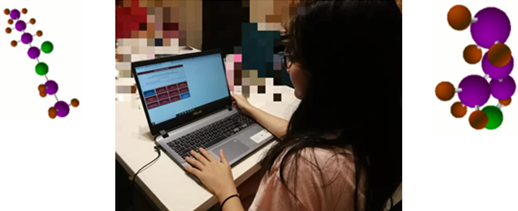
Science 8

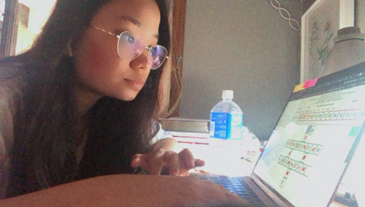 Our students are currently studying the unit entitled, Eco-House, with Chemistry as the specific area of focus. One of the learning goals is for the students to explain the properties of matter using its particulate nature. In relation to this, the students have been asked to develop a video using home-based materials to demonstrate one aspect of the particle nature of matter. This activity entails students to apply their critical as well as creative thinking skills.
Our students are currently studying the unit entitled, Eco-House, with Chemistry as the specific area of focus. One of the learning goals is for the students to explain the properties of matter using its particulate nature. In relation to this, the students have been asked to develop a video using home-based materials to demonstrate one aspect of the particle nature of matter. This activity entails students to apply their critical as well as creative thinking skills.
Here are some samples of the videos our students have created:
Grade 12 Physics
Grade 12 Physics students have shown their individual interest in various topics such as static friction, springs, bouncing balls, centripetal force, sound waves, capillary action, projectile motion, parachutes, and viscosity. They have worked hard to carry out multiple trials of their personal experiments which they designed and reported on, simulating the role of physicists in crafting a formal twelve-page lab report. Two of our students decided to also write their IB Extended Essay in Physics. One student designed his own waterwheel to test efficiency and another student investigated the correlation between the effect of path on a rolling marble.
Grade 9 Science

Grade 9 Science students are learning about and classifying many different types of reactions such as synthesis, decomposition, substitution, double replacement, photosynthesis, and cellular respiration. This week they had an opportunity to take a virtual field trip to visit our Chemical Preparatory Room and Chemistry Lab to learn about how chemicals such as strong acids and bases are stored and prepared as diluted solutions using the fume hood. They connected their theoretical knowledge from two units, Safety and Chemistry, with practical applications such as calculating and preparing safer solutions.
Grade 11 Physics
Did you know that “coldness” does not exist? Coldness is technically the absence of heat. In fact, scientists have been able to go closer and closer to absolute zero (the temperature, -273.15oC, where molecules stop moving). They have not yet reached it because they need a colder temperature for the heat to leave from that absolute zero temperature and as far as we know, it does not exist! Grade 11 Physics students are currently learning about thermal physics such as heat transfer from a hot to cold block after having already investigated the value for acceleration due to free fall (g = 9.81 m/s2). They have been learning about specific heat capacity, the amount of energy needed to increase the temperature of 1 kg of a substance by 1oCelsius (or Kelvin), and they are working on calculations using heat energy formulas such as:
Q = (mass)(specific heat capacity)(change in temperature)
and
Q = (mass)(latent heat of fusion or vaporization)
to figure out the total energy absorbed or lost by a certain quantity of a substance as it changes state such as from a solid to a liquid.
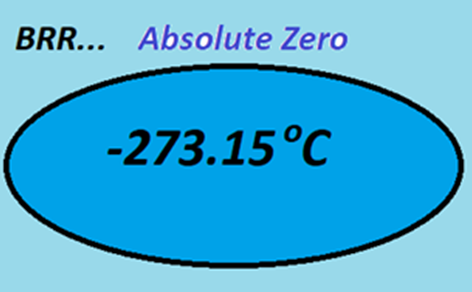
Grade 8 and 9 Design Classes
by Ms. Gerri Ancajas Jumao-as, G8 Design Teacher & Mr. Jesse Saclo, G9 Design Teacher
The Grade 9 Design class has recently begun their unit on Textiles. In order to prepare for the unit, the class explored their understanding of the unit’s Statement of Inquiry, key/related concepts, and global context.
Here are students’ responses to their understanding of the SOI (Global citizens apply the innovative use of resources to create) with the following guiding questions:
- What does it mean to be a global citizen?
To be a global citizen is to be aware of the ongoing events across the globe, as well as being aware of the impact we have on our society. Being a global citizen is being educated, prepared, and ready for the challenges and issues modern society faces, and being able to work towards the solutions for these issues. – Zeke
To be a global citizen means to think about humanity as a whole instead of it being divided into labels. A global citizen thinks and does things for the good of all people instead of a certain people or theirselves. – Sofia
A global citizen is someone who is aware of the problems and issues happening in our society today and they can think of ways to address certain issues or problems. – Esther
What does innovative mean?
If someone is innovative it means that they are thinking and introducing new ideas. They also come up with advanced and original ideas. – Liam
When you innovate you must think of ways which have not been done before and that you always think of new ideas. – Clark
Innovative is similar to inventive. However, innovative doesn’t mean you create something completely new; you just modify something to make it different. – Mahati
Natalie- being able to improve on different ideas and to be able to create some as well
Here are students’ responses to their understanding of the related concepts of ‘Function’ and ‘Resources” with the guiding questions: What is more important, function or form? Why? How does the lack or abundance of resources affect products?
Function without form is uninteresting, form without function renders it a showpiece. The philosophy on which is more important is hard to discern, but generally, form is more important as we look more towards the aesthetic, while we expect function to follow closely behind. The lack of resources makes it more expensive to produce, and mass production needs to minimize waste in order to extend resource usage. Abundance usually leads to more production and less expensive manufacturing. – Zeke
Function is more important because necessity is the mother of invention. You can make a shirt that looks great, but if it’s itchy, uncomfortable, or doesn’t fit, you wouldn’t buy it. The lack or abundance of resources can affect how much of a product you make. If you have more resources, then you can use them to make more, or you can keep experimenting and finding the best way to make a product. If you don’t have much resources, then you have to be careful when using them, so you have enough. – Mahati
Function is way more important than form because if the product doesn’t work then why would you make it or buy it. For example, the face mask- if the face mask looks stylish but doesn’t work at all, then you won’t be protected at all from any of the diseases like covid. In the end the non-working face mask will just be a useless accessory. The lack of abundance of resources affects products because then the product will always use the same thing and the company won’t try to use a cheaper or a more environmentally friendly resource. – Liam
Here are students’ responses to their understanding of the global context of ‘Globalization and sustainability” with the guide questions- What do you understand of globalization and sustainability? Is this important and how?
When you are looking for sustainability you should look for other ways and not limit yourself to one thing, or limit yourself in just one place. This is where Globalization comes in- you interact with other cultures and other companies and work together in looking for a sustainable source. – Clark
Globalization, in my understanding, is when different nations and people start to cooperate and rely on each other more, bringing everyone together rather than staying away or waging wars. Sustainability, when it comes to the environment and climate change, is finding better ways to produce energy and other things for a very long time, without having a bad effect on the environment. Both are very important because it can stop many problems in society. – Mahati
Globalization is connection and sharing between different places’ and countries’ ideas, resources, and etc. It is important because it has gotten us to where we are now. With the sharing of ideas, we are able to help each other and build upon each other’s things. Sustainability is being able to keep something working for a long time with as (hopefully) little damage as possible. It is very important because products tend to be useless if they are not sustainable. Examples: non-renewable energy (fossil fuels) is not a good or sustainable resource because of its negative lasting effects. – Sofia
Grade 8 Design
The Grade 8 Design class has recently started their unit on Upcycling. In order to prepare for the unit, the class explored their understanding of the unit’s Statement of Inquiry, key/related concepts, and global context.
The Statement of Inquiry for this unit is Innovation involves inventing and manipulating materials/resources to develop alternative environmentally friendly solutions. In response to their understanding of the related concepts of ‘Invention’ and ‘Resources” with the guiding questions- Do we still need to invent new things at this point of time? Explain. How does the lack of a specific resource affect or lead to inventions? Students responded:
Yes, we need to invent new things at this point of time because we can’t always use the same things when the world is evolving and changing overtime. You will need to invent new things to stay current. The lack of a specific resource could affect the invention that you were aiming for since, without all your materials, there will be a certain flaw in a certain area. – Roland
Yes we do; there are still some things that haven’t been invented that we don’t know we actually might need and there’s always room for improvement, there might actually be inventions that don’t work well. The lack of resources can affect inventions and cause malfunctions. – Gabrielle
New things can still be invented to meet people’s needs or what they want. The lack of resources can affect invention by slowing down the process, so you might have to think of alternatives, or this could be solved by inventing another resource. – Fiana
Grade 9 Design
The nature of design, according to the MYP, is the link between innovation and creativity. Through this notion, designers explore a number of possibilities to solve problems related to products or systems utilizing the methods of prototyping, experimentation, and adaptation.
In design class students utilize the design cycle model which represents the MYP design methodology of how designers develop products. The process has four stages: inquiring and analysing, developing ideas, creating the solution, and evaluating. The design cycle, while involving successive stages, is an iterative and cyclical process.
The Grade 9 Design class explored ways to prepare food while restricted to their home quarantine. To start their design process, students performed an inquiry to put together an inventory of cooking utensils and ingredients that they have at hand. With this information students were able to determine the direction that they would need to proceed with the challenge of preparing food during quarantine. Identifying problems is an important stage in the design process as it leads to the successful completion of eventual solutions. The students in their present capacity were able to identify problems associated with food and, with further research and development of skills through formative assessments, these identified problems were presented with practical and easy to perform design solutions that the students developed themselves.
The students also involved their families in the design process by allowing them to take part in creating the solution. The data the students gathered from the survey they performed informed them about the food preferences of each member of their family. This allowed the students to determine the ingredients, method, recipe, and portion of the type of food they will prepare. With their confident cooking skills, the students performed their food preparation tasks during their preferred schedule.
To experience and evaluate the tastes and flavors of their recipes check out these choice recipes. Enjoy!
College/Careers Counselor Corner
by Ms. Jenny Basa, College/Careers Counselor
Tip for the Week:
While you are in high school (Grade 9-12), most universities consider the extracurricular activities you have in the application process. Take advantage of the After School Activities that are offered by CIS even in a virtual platform. There are a variety of activities offered and these can boost your college application portfolio.
Upcoming Virtual Events and Fairs: (students & parents are welcome)
DATE
January 25
Monday – 5:00PM
January 26
Tuesday
5:00 PM or
January 28
Thursday
6:30 PM
January 28
Thursday
5:00 – 6:30PM
EVENT
Vatel Bordeaux – Hotel & Tourism Business School (France)
LINK to join
Master Class on The New Entrepreneurial Mindset
Scan this QR Code to Register:

Offered by: Glion and Les Roches (Switzerland)
Each Master Class is from 45 – 60 minutes.
Asian Virtual College Fair
Click here for details – Institutions Attending by country:
Japan: Nagoya University, Ritsumeikan University, Nagoya University of Commerce & Business, Temple University, Ritsumeikan University, Kyoto University of Advanced Science and Waseda University
Singapore: Singapore Management University, Yale – National University of Singapore, Singapore Institute of Management
Hong Kong: University of Hong Kong, Hong Kong University of Science & Technology, Hong Kong Polytechnic University and City University of Hong Kong
China: NYU – Shanghai, Duke Kunshan University
January 29
Friday
9:00 PM
February 6
Saturday
6:00 PM
Finding the Best College Fit in the Time of COVID
LINK to register
Presented by: San Diego State University, Michigan State University, Stony Brook University
Breda University of Applied Sciences (Netherlands)
Digital Discovery Day
LINK to register
You can register for as many sessions as you want, but please note that you have to register for each session separately.
If you’re not able to join “live”, please still register, so you can watch the recordings back later.
Programme:
6:00 – 7:00PM Studying in the Netherlands: the education system
45 min. webinar + 15 min. Q&A by staff and international students
- What is it like to study in the Netherlands?
- What is a university of applied sciences?
- What is the teacher style?
- And what are the costs?
7:45 – 8:30PM Studying at Breda University of Applied Sciences: the practical matters
30 min. webinar + 15 min. Q&A
- Application procedure
- Scholarships
- Housing
- Side jobs
9:15 – 9:45 PM How to survive studying in the Netherlands
30 min. interactive quiz + 15 min. Q&A
Get to know the Dutch culture with questions about:
- Dutch food
- How to deal with the Dutch?
- The weather
- Transport
- And much more!
7:00 – 7:45PM Studying at Breda University of Applied Sciences: an introduction to our university and study programmes
30 min. interactive webinar + 15 min. Q&A by students and staff
- Why should you study at BUas?
- What kind of programmes do we offer?
- Project examples
- International experiences from our students
8:45 – 9:15 PM Discover our Campus and the City of Breda
20 min. video tour + 10 min. Q&A by our international students
- Our brand-new green campus
- Our modern facilities
- The lovely city of Breda
- Student life
- Our students favourite spots in the city
10:00 – 10:45 PM Job opportunities
30 min. webinar + 15 min. Q&A
- What’s the value of a Dutch degree?
- Which job opportunities do students have after graduation?
- Stay-back year
- Job examples of our graduates
SAT Update
The College Board announced this week that it plans to discontinue the optional essay component and SAT Subject tests. Please check this link for more details.
With the cancellation of the test dates in the first semester, it is highly likely that future test dates below may be cancelled too due to the pandemic. An update will be announced as soon as confirmation is received from the College Board. At the moment, these dates are open for registration.
Students are advised to check the university websites for Test-optional announcements.
| 2020-2021 Test Dates | Test | Registration Deadline |
| March 13, 2021 | SAT only (no Subject tests) | February 12, 2021 |
| May 8, 2021 | SAT & SAT Subject Tests | April 8, 2021 |
| June 5, 2021 | SAT & SAT Subject Tests | May 6, 2021 |
To register for the SAT, you may click on this link. If you need assistance or have any questions, please feel free to email Ms. Jenny Basa at jbasa@cis.edu.ph.



